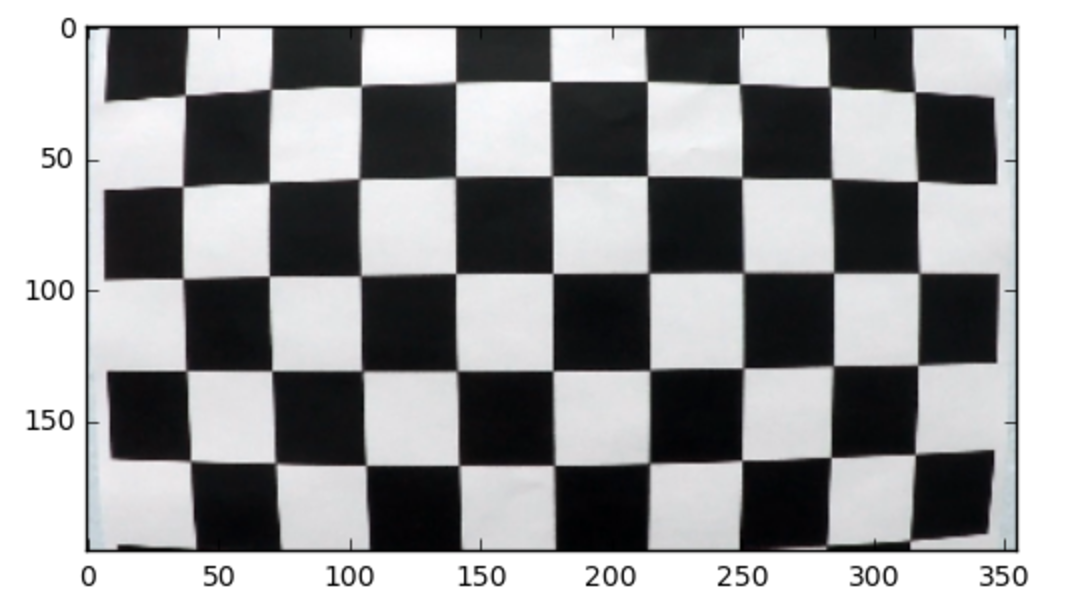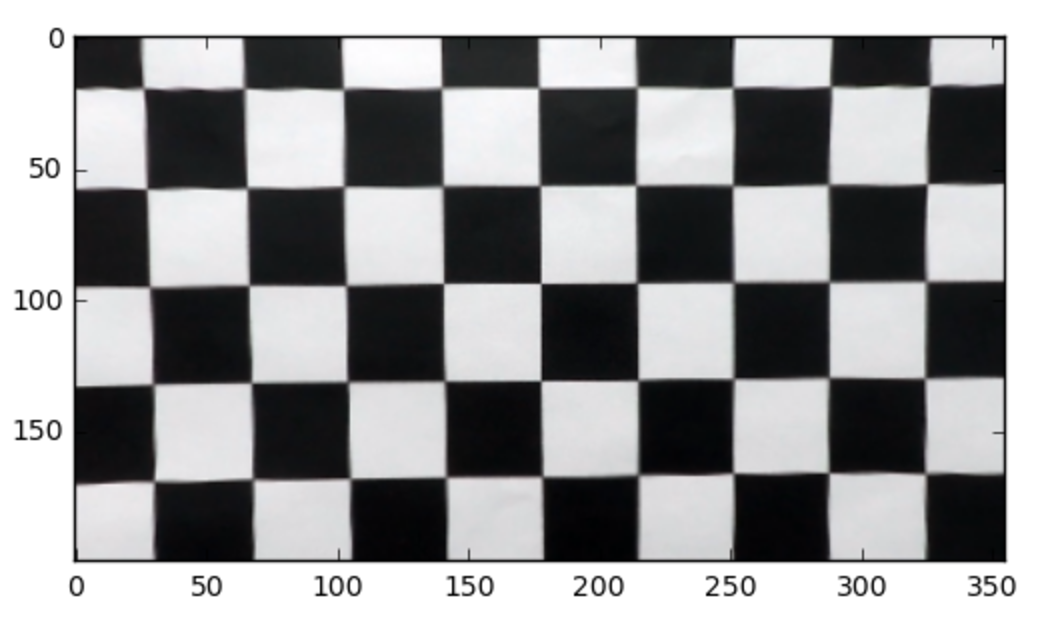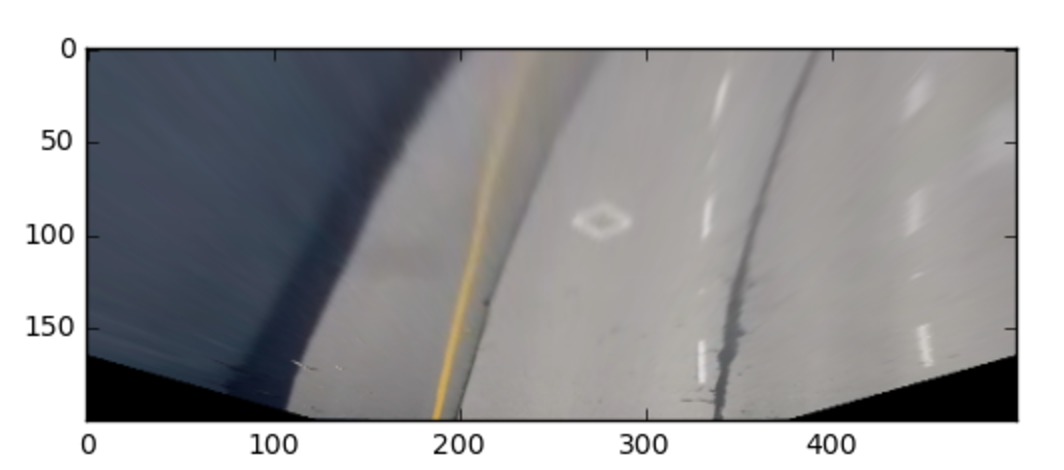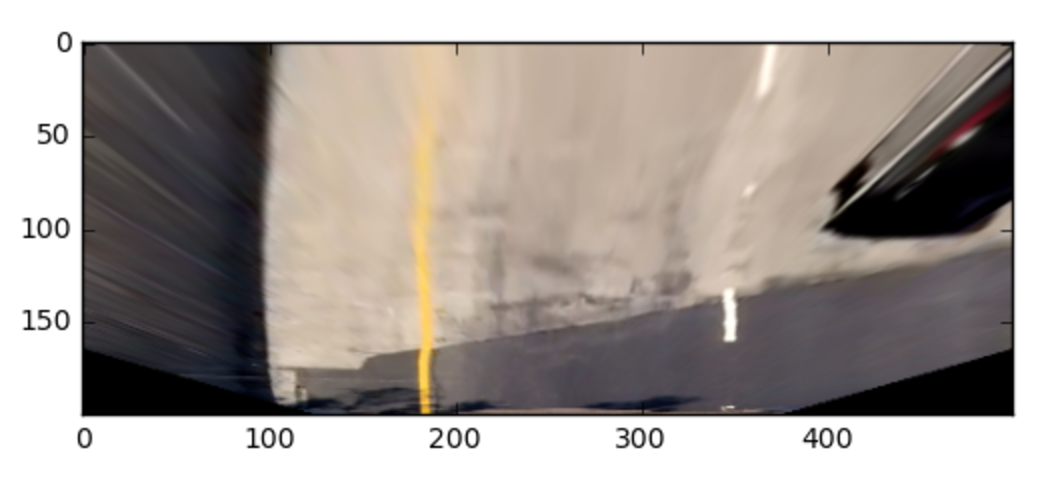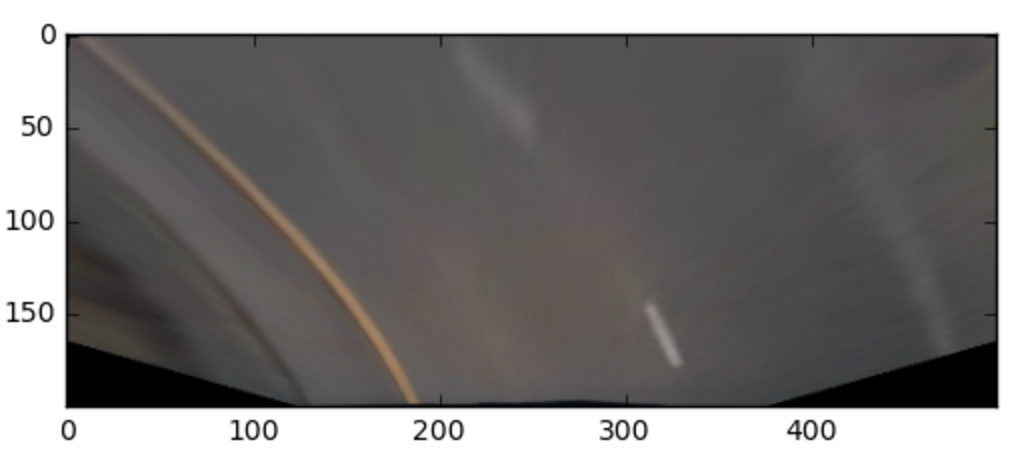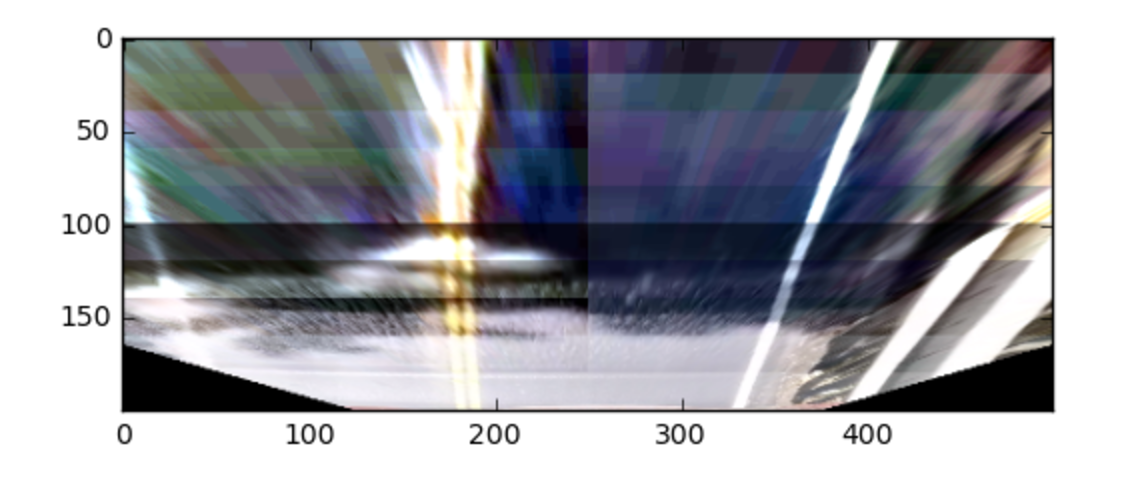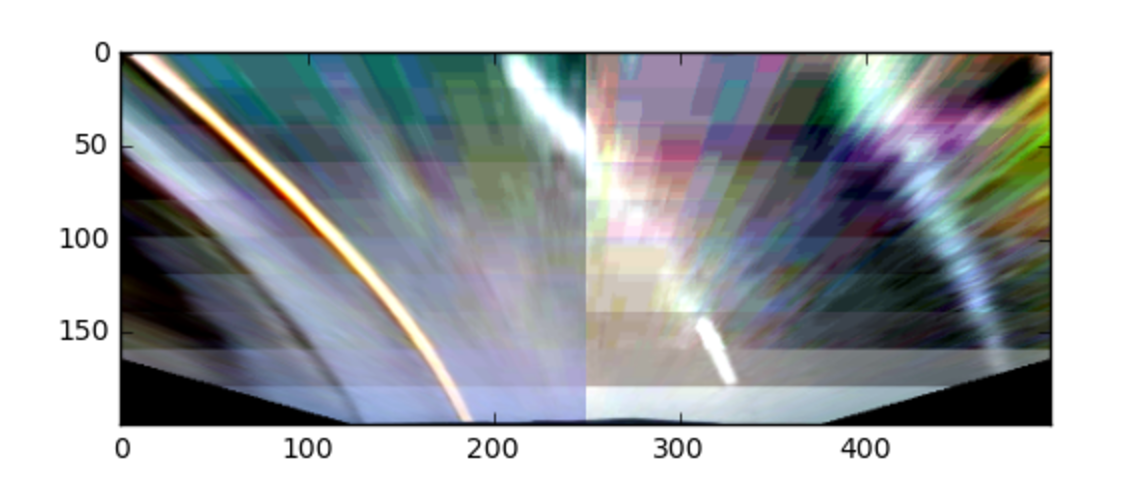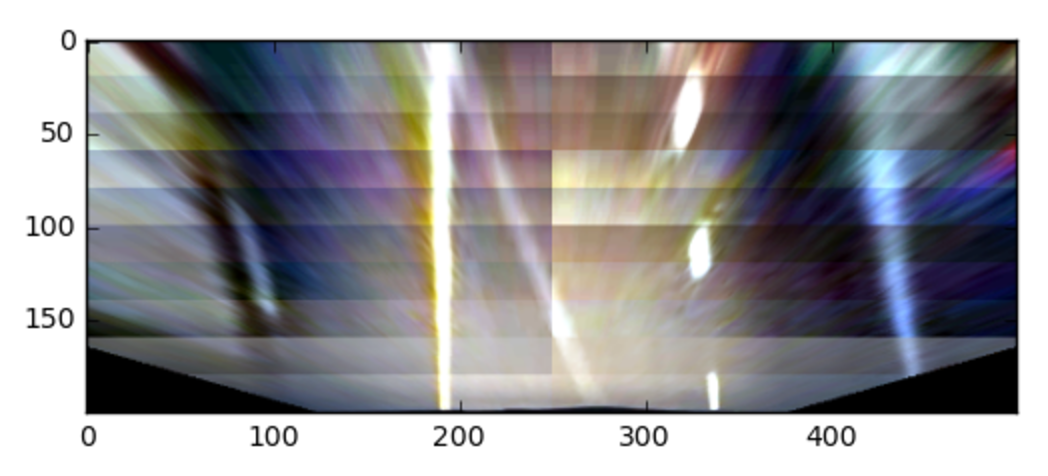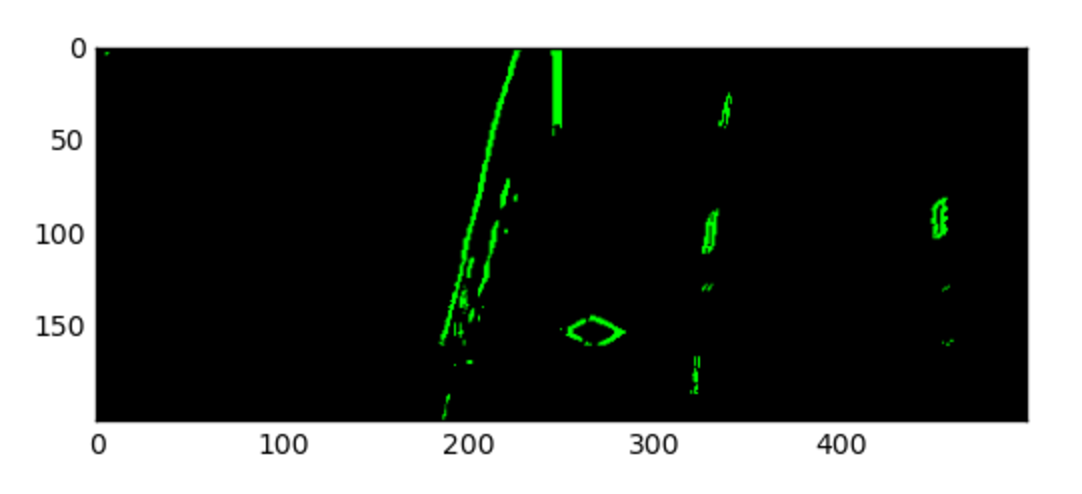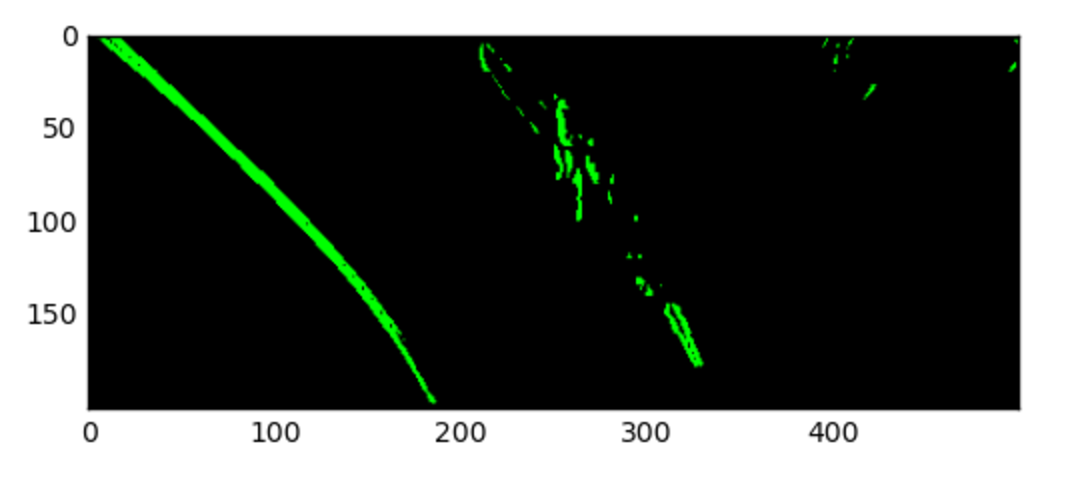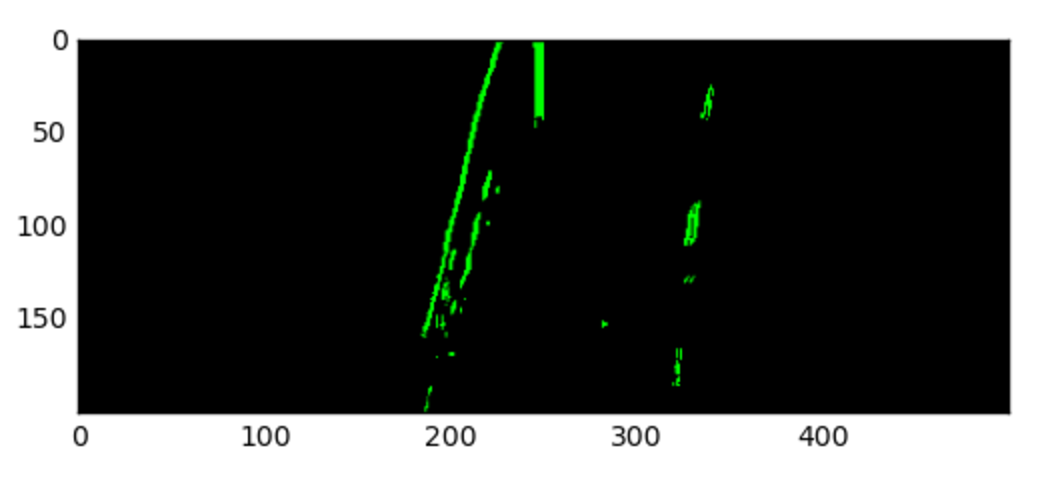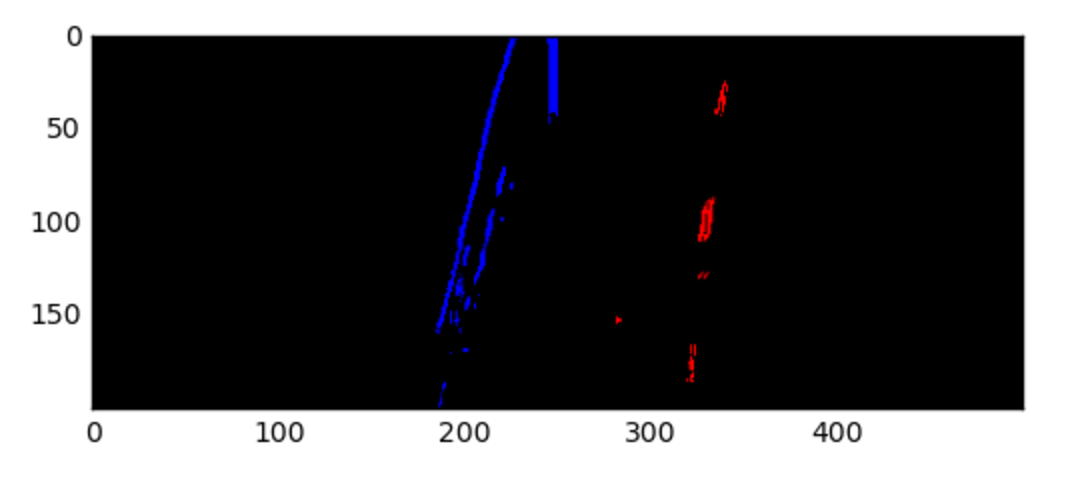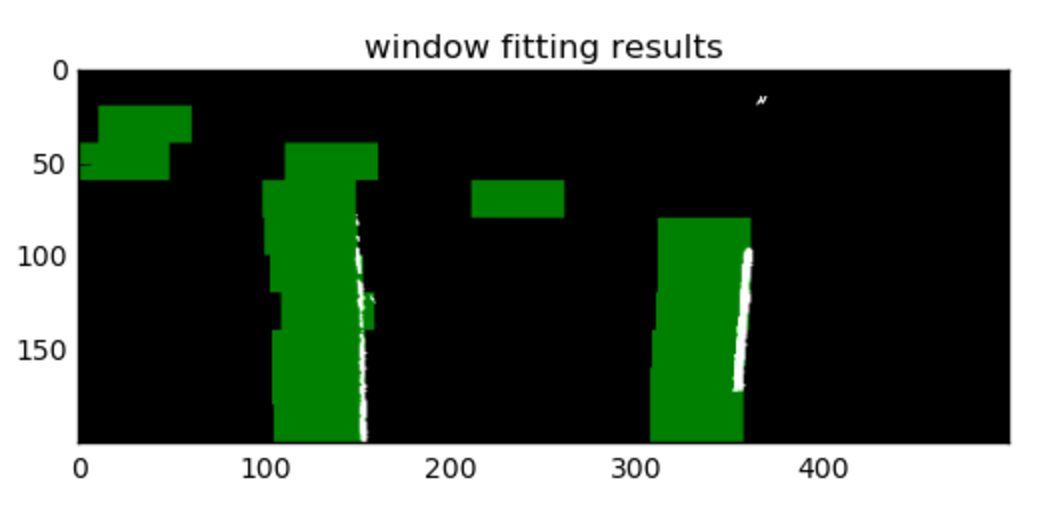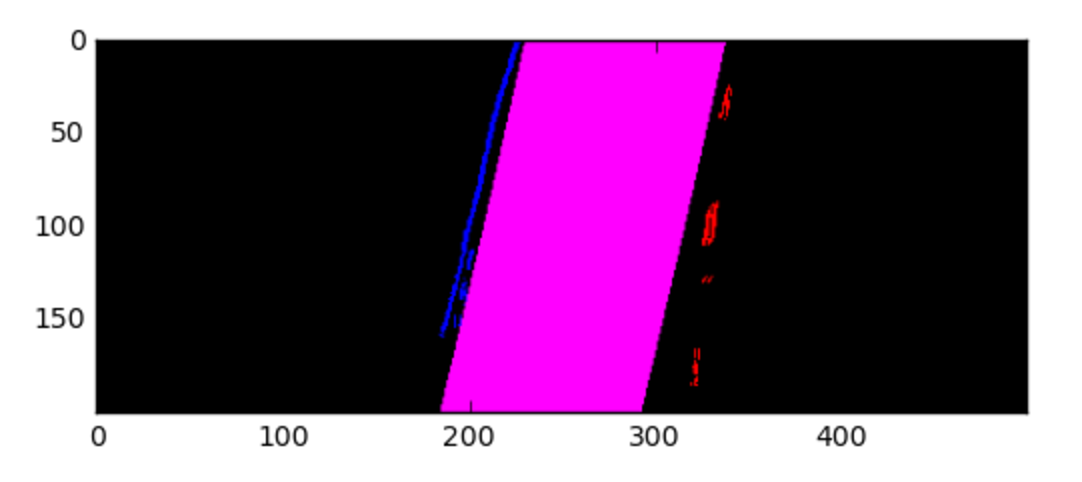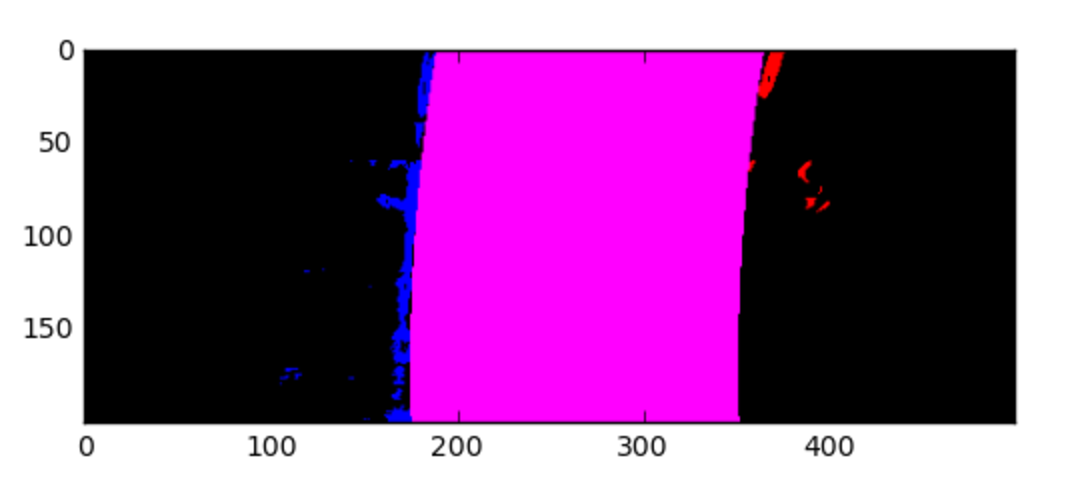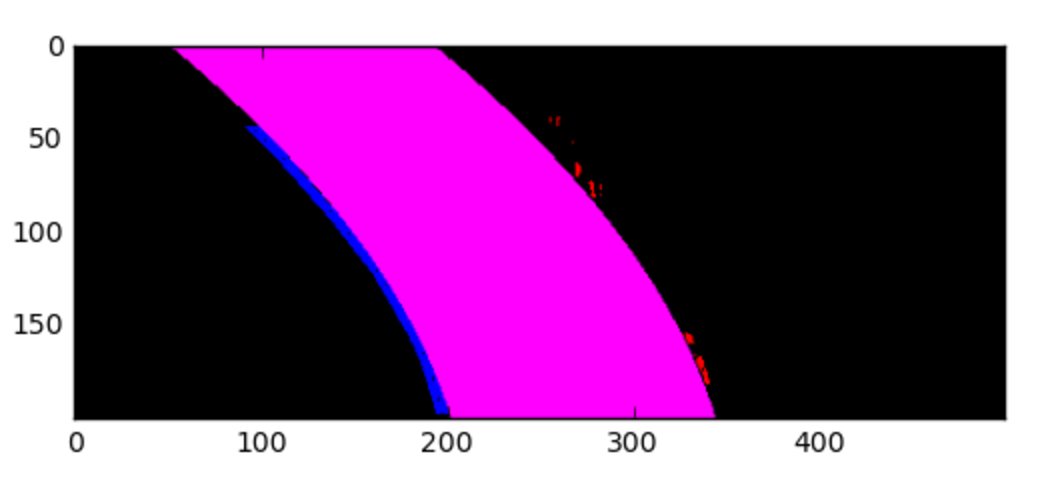This README will go step-by-step through the image pipeline for roughly detecting traffic lanes on fair-weather Interstates.
1 # Main.py
2
3 #THIS SCRIPT RUNS THE LANE FINDER ON VIDEOS
4 from LaneAPI import LaneAPI
5 laneFinder = LaneAPI()
6
7
8
9 #cropPixels is tuple: ( leftOffset, rightOffset, topOffset, bottomOffset )
10 print( 'project_out starting' )
11 laneFinder.Calibrate( cropPixels = (0,0,400,30) )
12 laneFinder.ProcessVideo( './test_videos/harder_challenge_video.mp4',
13 './out_videos/LANES_harder_challenge_video.mp4' )
14 print( 'project_out finished' )
15
16
17
18 print( 'project_out starting' )
19 laneFinder.Calibrate( cropPixels = (0,0,405,30) )
20 laneFinder.ProcessVideo( './test_videos/challenge_video.mp4',
21 './out_videos/LANES_challenge_video.mp4' )
22 print( 'project_out finished' )
23
24
25
26 print( 'project_out starting' )
27 laneFinder.Calibrate( cropPixels = (0,0,381,30) )
28 laneFinder.ProcessVideo( './test_videos/project_video.mp4',
29 './out_videos/LANES_project_video.mp4' )
30 print( 'project_out finished' )
This is put together using Python and a few open libraries, so if you want to play around with it, you will need to find and install them.
Also: My apologies for the lack of space/tab standardization in the repo.
#EXTERNAL DEPENDENCIES
import cv2
import numpy as np
from sklearn import linear_model
from sklearn.pipeline import make_pipeline, Pipeline
from sklearn.preprocessing import PolynomialFeatures
from moviepy.editor import VideoFileClip
You can calibrate a cheap camera/lens using opencv and a standard checkerboard pattern: http://docs.opencv.org/2.4/doc/tutorials/calib3d/camera_calibration/camera_calibration.html
After finding the interior corners, it tries to remove curvature by warping corner locations to a straight grid.
( I took this through a glass of water for an example ):
Original:
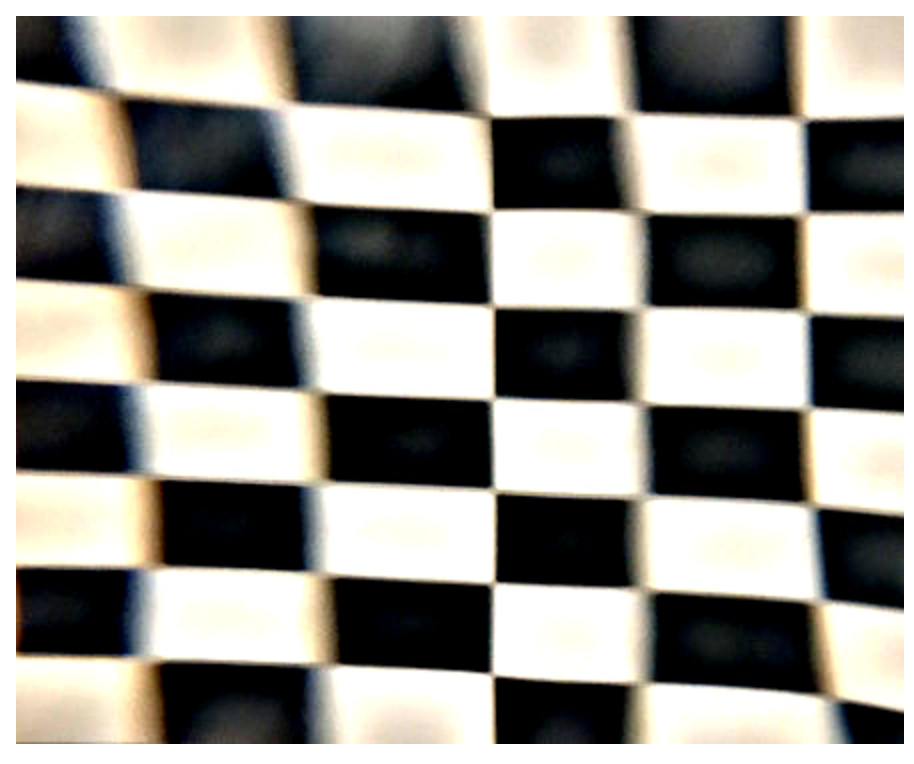 Corners:
Corners:
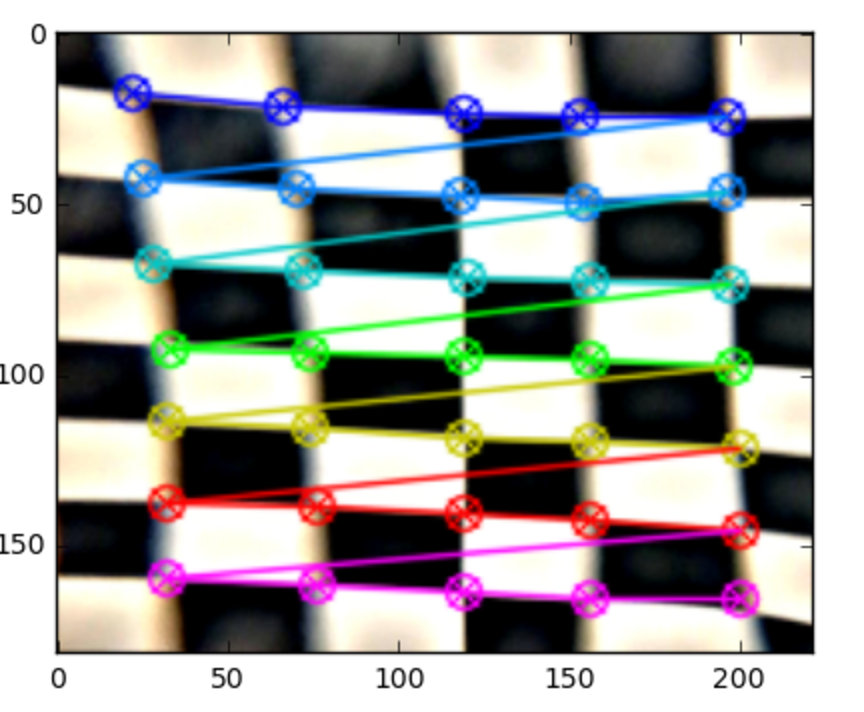
Undistorted:
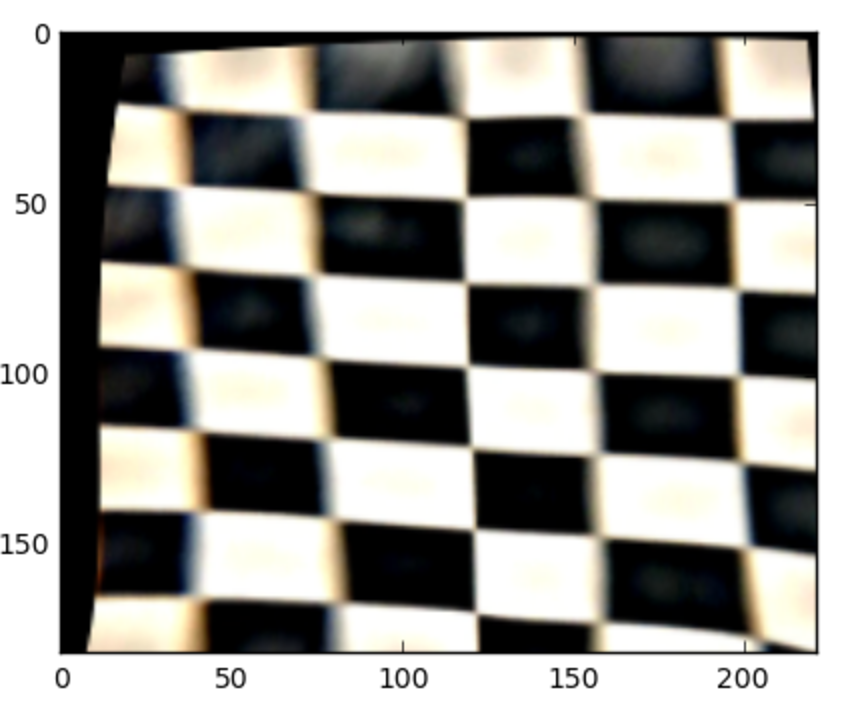
This is done in Calibrate.py:
27 def _Calibrate( self, imagesPath, resizeTuple, hCorners, vCorners ):
28 #glob get all image file paths matching imagesPath
29 images = glob.glob(imagesPath)
30
31 #open all images with cv2
32 images = tuple(map(lambda x: cv2.imread(x), images))
33 if not images:
34 return
35
36 #if resizing necessary, resize to (w,h) tuple parameter
37 if resizeTuple:
38 images = tuple(map(lambda x: cv2.resize(x, resizeTuple), images))
39
40 #convert image to grayscale
41 images = tuple(map(lambda x: cv2.cvtColor(x,cv2.COLOR_BGR2GRAY), images))
42
43 #cv2 find chessboard corners
44 corners = tuple(map(lambda x: cv2.findChessboardCorners(x,(hCorners,vCorners),None), images))
45
46 #filter out unsuccessful calibration images
47 corners = tuple(map(lambda x: x[1], filter(lambda x: x[0], corners)))
48 if not corners:
49 return
50
51 #create objective straight-line ground truth grids for each image
52 grid = np.zeros((vCorners * hCorners,3), np.float32)
53 grid[:,:2] = np.mgrid[0:hCorners, 0:vCorners].T.reshape(-1,2)
54 grids = [grid]*len(corners)
55
56 #calibrate the camera
57 _, matrix, distortion, _, _ = cv2.calibrateCamera(grids, corners, images[0].shape[:2], None, None)
58 self.matrix = matrix
59 self.distortion = distortion
60
61
62 def Undistort( self, image ):
63 #Undistort based on prior calibration
64 if self.matrix is not None and self.distortion is not None:
65 image = cv2.undistort(image,
66 self.matrix, self.distortion, None, self.matrix)
67
68 #Crop pipeline images to area of interest
69 if self.cropPixels: #cropPixels is tuple: ( leftOffset, rightOffset, topOffset, bottomOffset )
70 cp = self.cropPixels
71 image = image[cp[2]:image.shape[0]-cp[3],cp[0]:image.shape[1]-cp[1],:].copy()
72
73 return image
I crop the incoming images during the calibration using a custom set of crop amounts per video as seen in Main.py and Calibration.py above, I crop it to the target region of the image containing the road:
I then take the cropped images and transform them to a birds-eye perspective:
This is done in Transforms.py:
1 # Transforms.py
2
3 #EXTERNAL DEPENDENCIES
4 import numpy as np
5 import cv2
6
7 class Transforms:
8
9 def __init__( self ):
10 self.matrix = None
11 self.inverse = None
12
13
14 #Setup coordinates to for birdsEye perspective transformations
15 #Calculate matrix and inverse matrix based on image size
16 def _Setup( self, image ):
17 self.oshape0 = int(image.shape[0])
18 self.oshape1 = int(image.shape[1])
19 #the begin array has the region we are targeting
20 #this region will be stretched to create the birds eye view
21 begin = np.array([
22 [image.shape[1]*-.5,image.shape[0]*.999],
23 [image.shape[1]*.35,image.shape[0]*.26],
24 [image.shape[1]*.65,image.shape[0]*.26],
25 [image.shape[1]*1.5,image.shape[0]*.999]], dtype=np.float32)
26 # This transform area was used for the Appleton video's shorter lane finder
27 # [image.shape[1]*-.3,image.shape[0]*.999],
28 # [image.shape[1]*.25,image.shape[0]*.4],
29 # [image.shape[1]*.75,image.shape[0]*.4],
30 # [image.shape[1]*1.3,image.shape[0]*.999]], dtype=np.float32)
31
32 #the end array has the image corners
33 end = np.array([
34 [0,image.shape[0]],
35 [0,0],
36 [image.shape[1],0],
37 [image.shape[1],image.shape[0]]], dtype=np.float32)
38
39 #save the transformation parameters
40 self.matrix = cv2.getPerspectiveTransform( begin, end )
41 self.inverse = cv2.getPerspectiveTransform( end, begin )
42
43
44 #Warp to birds-eye view perspective
45 def BirdsEye( self, image ):
46 if self.matrix is None: #This is the first pipeline step
47 self._Setup( image ) #Setup based on Size of image
48
49 im = cv2.warpPerspective( image, self.matrix, \
50 image.shape[::-1][1:], \
51 flags=cv2.INTER_LINEAR)
52 im = cv2.resize(im, (500,200))
53 return im
54
55
56 #Reverse the birds-eye perspective transform back to normal
57 def HumanEye( self, image ):
58 image = cv2.resize(image, (self.oshape1, self.oshape0))
59 im = cv2.warpPerspective( image, self.inverse, \
60 image.shape[::-1][1:], \
61 flags=cv2.INTER_LINEAR)
62 return im
63
I then process the image in several different rectangles, and for each rectangle, I clip out everything 2 standard deviations from the mean and stretch the remaining values back to 0-255 range. This helps brighten the lane lines saturation values, especially on darker images.
This also happens in Transforms.py:
65 #Standardize color to enhance lane line contrast in image
66 def Standardize( self, image ):
67 #Get incoming image shape
68 osizey,osizex,osizez = image.shape
69
70 #breakup into rectangles, each will be standardized seperately
71 boxesizey = 20
72 boxedy = image.shape[0] // boxesizey
73 for i in range(boxedy):
74 for xsplit in range(2):
75 #breakup into rectangle based on loop indexes
76 sxs = (osizex >> 1)
77 sx = xsplit * sxs
78 sx2 = (xsplit + 1) * sxs
79 img = image[i*boxesizey:(i+1)*boxesizey, sx:sx2, :]
80
81 #Find 2 standard deviations from the mean value in region
82 x = img.copy().reshape(-1,3).astype(np.float32)
83 stdx = 2.0 * np.std(x, axis=0)
84 avgx = np.mean(x, axis=0)
85
86 #Clip original image to 2 stdeviations from mean
87 x = np.clip(img.reshape(-1,3), avgx-stdx, avgx+stdx)
88
89 #Scale values back to 0-255
90 x = x - np.min(x, axis=0)
91 x = x.astype(np.float64) / (np.max(x, axis=0) + 0.00000001)
92 x = np.clip((x*255.0).astype(np.uint8), 0, 255)
93
94 #update standardized image region
95 image[i*boxesizey:(i+1)*boxesizey, sx:sx2, :] = x.reshape((boxesizey,sxs,3))
96
97 return image
I only keep values that meet certain (HSV) V-value levels and (RGB) red levels, then I use horizontal Sobel Edge detection on the Blue channel (blurring the results to keep more than just thin edge detected lines).
This is done in Masking.py:
1 # Masking.py
2
3 #EXTERNAL DEPENDENCIES
4 import numpy as np
5 import cv2
6
7 class Masking:
8
9 def LaneEdges( self, image ):
10 #Mask image based on red channel
11 r_binary = self._RedMask( image )
12
13 #Mask image based on value channel
14 v_binary = self._ValueMask( image )
15
16 #Mask image based on Sobel Edges over the blue channel
17 sb_binary = self._SobelBlueMask( image )
18
19 #Aggregate masks to single masking
20 mask = self._FullMask( r_binary, sb_binary, v_binary )
21
22 #Crop out data outside possible lane curvatures
23 mask = self._CropMask( mask )
24
25 return mask
26
27
28 def _RedMask( self, image ):
29 #pull red channel from RGB image
30 r_channel = image[:,:,0]
31
32 #mask channel based on threshold 245-255
33 r_binary = np.zeros_like(r_channel)
34 r_binary[ (r_channel >= 235) ] = 1
35
36 return r_binary
37
38
39 def _ValueMask( self, image ):
40 #pull value channel from RGB image
41 hsv = cv2.cvtColor(image, cv2.COLOR_RGB2HSV)
42 v_channel = hsv[:,:,2]
43
44 #mask channel based on threshold 245-255
45 v_binary = np.zeros_like(v_channel)
46 v_binary[ (v_channel >= 245) ] = 1
47
48 return v_binary
49
50
51 def _SobelBlueMask( self, image ):
52 #pull blue channel from RGB image
53 b_channel = image[:,:,2]
54
55 #resize image to 600x600 and make Vertical Sobel Edges
56 x = cv2.resize( b_channel, (600,600) )
57 x = np.absolute( cv2.Sobel(x, cv2.CV_64F, 1, 0, ksize=31) )
58 x = np.uint8( 255 * x / (np.max(x) + 0.00000001) )
59
60 #blur sobel edges to give more information to curve regression
61 x = cv2.resize(x, (300,300))
62 x = cv2.resize(x, (image.shape[1], image.shape[0]))
63
64 s_binary = np.zeros_like(b_channel)
65 s_binary[ (x >= 25) ] = 1
66
67 return s_binary
68
69
70 def _FullMask( self, maskA, maskB, maskC ):
71 mask = np.zeros_like(maskA)
72 mask[ (maskA == 1) & (maskB == 1) & (maskC == 1) ] = 255
73 return mask
I then crop out certain static areas of the images where the road shouldn't be, like the bottom corners
This is also done in Masking.py:
76 def _CropMask( self, image ):
77 #crop out lower left and lower right corners, assuming car is not riding ontop of a lane
78 keep_region = np.array( [
79 [ image.shape[1]*.2, image.shape[0]*.999 ],
80 [ image.shape[1]*.22, image.shape[0]*.55 ],
81 [ image.shape[1]*.15, image.shape[0]*.001 ],
82 [ image.shape[1]*.85, image.shape[0]*.001 ],
83 [ image.shape[1]*.78, image.shape[0]*.55 ],
84 [ image.shape[1]*.8, image.shape[0]*.999 ] ], dtype=np.int)
85 keep_area = np.zeros_like( image )
86 cv2.fillPoly( keep_area, [keep_region], 255 )
87 result = cv2.bitwise_and( image, keep_area )
88
89 #Crop out very bottom center, assuming car is not riding ontop of a lane line
90 halfw = int(result.shape[1] // 2)
91 halfh = int(result.shape[0] // 2)
92 halfd = int(result.shape[1] // 16)
93 result[ halfh:, halfw-halfd:halfw+halfd ] = 0
94 return result
95
Masking.py:
97 def _SplitLanes( self, mask ):
98 #remove 3rd array dimension ( its size one anyway )
99 mask = mask.reshape(mask.shape[:2])
100
101 #divide image in half horizontally
102 w_ = mask.shape[1] // 2
103
104 #empty right half of left lane mask
105 left_mask = mask.copy()
106 left_mask[:,w_:] = left_mask[:,w_:] * 0
107
108 #empty left half of right lane mask
109 right_mask = mask.copy()
110 right_mask[:,:w_] = right_mask[:,:w_] * 0
111
112 #Return new R,G,B mask - R = Left Lane, G = Empty, B = Right Lane
113 empty_mask = np.zeros(mask.shape)
114 return np.dstack( ( left_mask*255, empty_mask, right_mask*255 ) )
I then remove the center of the lane and very center of the image using prior known curve regression:
Regress.py
30 # if we already have a curve context
31 # remove mask noise from central area inside the lane lines according to known curve
32 if self.lastModel is not None and self.lastCount < 40:
33 d = int(self.avgDistance) >> 2
34 curve_model = self.lastModel
35 for y in range(splitMask.shape[0]):
36 split = curve_model.predict(np.array([y]).reshape(-1,1))
37 splitMask[y,split-d:split+1, 0] = 0
38 splitMask[y,split-1:split+d, 2] = 0
39
40 #ignore center line vertical striping from color standardization
41 halfw = int(splitMask.shape[1]//2)
42 splitMask[:,halfw-3:halfw+3,:] = 0
43
Using a Histogram to locate each lane wasn't working well because the noise in each row was enough to make the histogram choose the noise over the lane position, and often had higher values than the lane edges, so I switched to a new approach using averaging instead...
Here is what the result of my approach looks like visually:
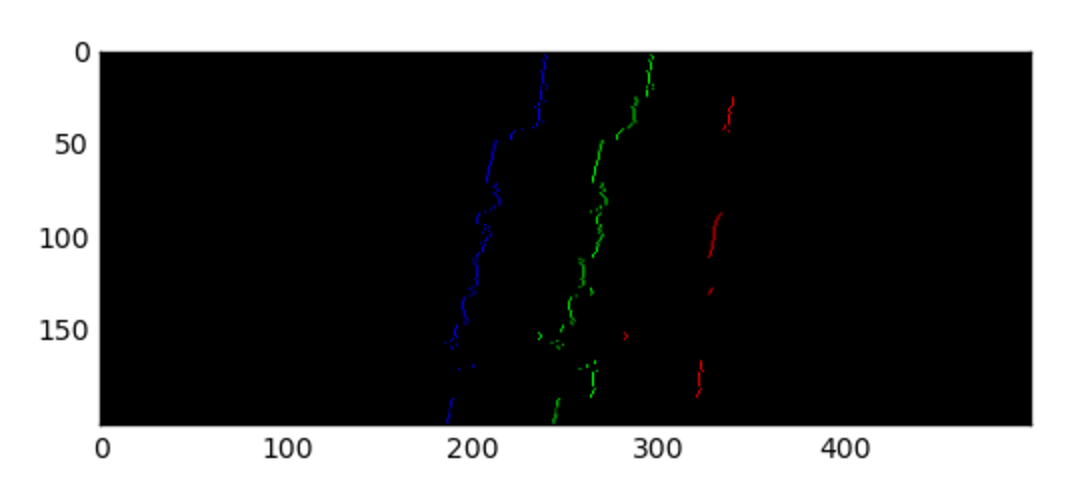
And this is what's happening:
I multiply X-Coordinates (columns) against a boolean matrix of the mask and then average by row to find average X-Coordinate per Y-Coordinate (row):
Regress.py:
44 #change to 0-1 value range
45 binMask = np.clip(splitMask.copy(), 0, 1).astype(np.float32)
46
47 #build 3d array filled with x-position location
48 xValues = list(range( splitMask.shape[1] ))
49 x3d = np.dstack((xValues,xValues,xValues)).astype(np.float32)
50
51 #multiply mask by x-positions to replace ON values with x-positions
52 xfactor = binMask * x3d
53
54 #get average x-position for every y row
55 with np.errstate(invalid='ignore', divide='ignore'):
56 averageXposition = np.true_divide( \
57 xfactor.sum(axis=1), (xfactor>0).sum(axis=1) )
58 averageXposition = np.clip( averageXposition, 0, splitMask.shape[1] - 1 )
59 averageXposition = averageXposition.astype(np.int)
60
61 #each y value now holds average x coordinate of the lane lines in that dimension
62 return averageXposition
Then I calculate the average center of the lane based on the average left and average right lane values per row:
Regress.py:
65 def _GetAverageDistanceFromLaneToCenter( self, averageXposition, width ):
66 avg_dist = 0
67 avg_count = 0
68 #avg_dist is half the average distance between the lanes in pixels
69 #given the average x positions in the two lane dimensions (0,1) calculate average pixel distance
70 for x in averageXposition:
71 if (x[2] > 1 and x[0] > 1):
72 avg_count += 1
73 avg_dist += x[2]-x[0]
74 if avg_count > 0 and avg_dist > 0:
75 avg_dist = int(abs(avg_dist / avg_count) // 2)
76 else:
77 avg_dist = int(width // 6)
78
79 #smooth out the new calculation based on previous frame distance calculations
80 newavg = int(avg_dist)<<1
81 if (newavg > 50):
82 self.avgDistance = (self.avgDistance*0.95 + newavg*0.05)
83 avg_dist = int(self.avgDistance // 2)
84
85 #calculate center lane position based on the left/right lanes and distance
86 centers = np.zeros(averageXposition.shape[:1], dtype=np.int)
87 for y in range(len(averageXposition)):
88 x = averageXposition[y]
89 if ( x[0] > 1 and x[2] > 1 ):
90 centers[y] = int( (x[0] + x[2]) >> 1 )
91 elif ( x[0] > 1 ):
92 centers[y] = int( x[0] + avg_dist )
93 elif ( x[2] > 1 ):
94 centers[y] = int( x[2] - avg_dist )
95
96 return centers
Next I take these centers and average lane distance, and use that to shift the left and right lane masks into the center of the lane in a single binary mask so that I have better data to regress a curve over:
Here's what the new masks look like after this step:
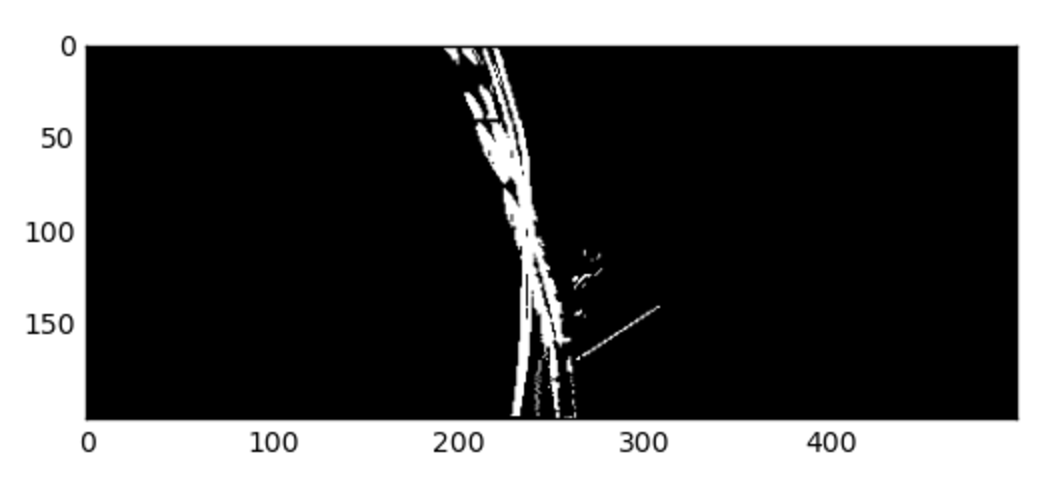
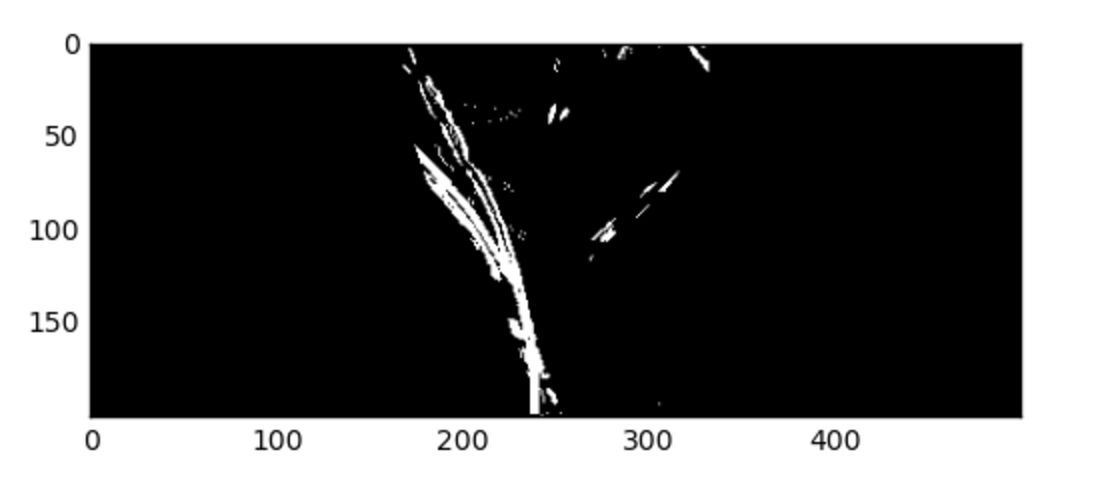
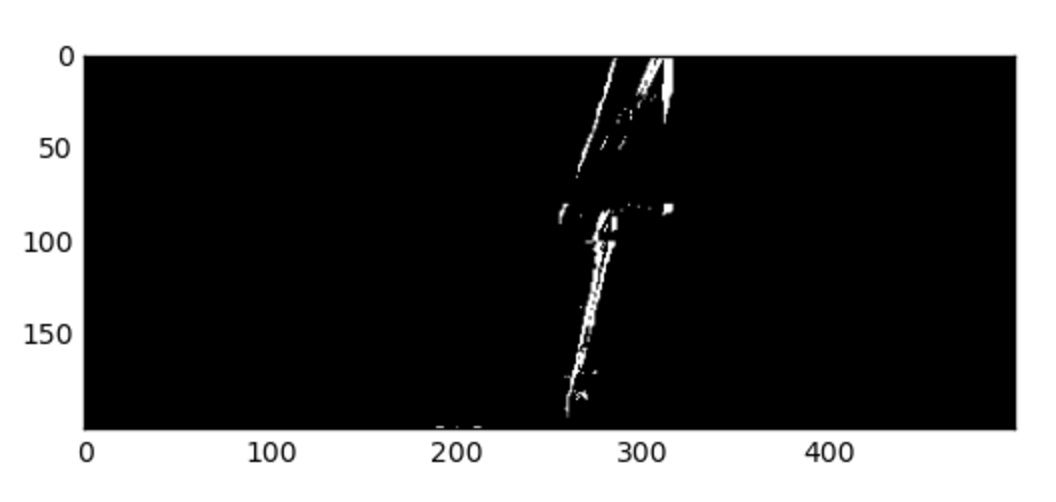
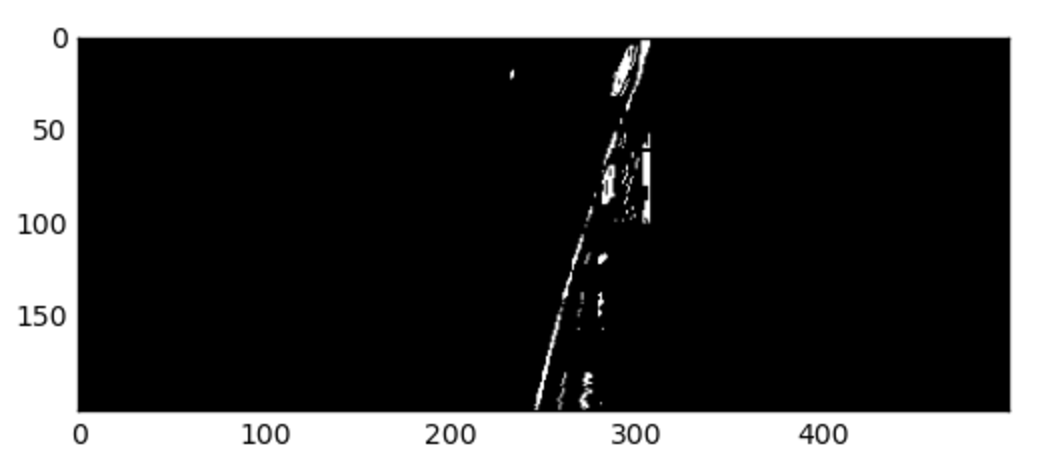
This is done in Regress.py:
98 def _ShiftSplitMaskIntoCenter( self, splitMask, centers ):
99 #based on the the distance and centers shift the left right masks into the center
100 distance = int(self.avgDistance) >> 1
101 right = np.roll(splitMask[:,:,2].copy(), -distance, axis=1).astype(np.bool)
102 left = np.roll(splitMask[:,:,0].copy(), distance, axis=1).astype(np.bool)
103 middle = np.zeros((splitMask.shape[0], splitMask.shape[1])).astype(np.bool)
104 #add current context bias to the mask by plotting points on our current curve into the mask
105 for y,x in enumerate(centers):
106 if (x > 1):
107 x = max(5,min(splitMask.shape[1]-6,x))
108 middle[y,x-5:x+5] = True
109 #combine left, right, and current curve into one binary mask
110 full = (left | middle | right )
111 return full
After Regressing the Curve, I paint the values at the center over the distance of the lane calculated earlier:
This step also keeps binary lane mask data from prior frames to fit a smoother curve.
The regression maps Y value (row) to predict X value (column) for the curve.
All of this code happens in Regress.py as well, which still needs to be refactored:
113 def _FitCurve( self, splitMask, centerShifted ):
114 #keep some mask information from prior frames
115 tenFrame = len(centerShifted) * 100
116 if len(self.lastX) > tenFrame:
117 self.lastX = self.lastX[-tenFrame:]
118 self.lastY = self.lastY[-tenFrame:]
119
120 #append current mask information to lastX and lastY lists
121 for y,row in enumerate(centerShifted):
122 for x,v in enumerate(row):
123 if v:
124 self.lastX.append(x)
125 self.lastY.append(y)
126
127 #regress a polynomial fit to lastX,lastY information
128 try:
129 model_ransac = Pipeline(steps=[('kernel',PolynomialFeatures(2)), \
130 ('ransac',linear_model.RANSACRegressor(linear_model.LinearRegression()))])
131 model_ransac.fit(np.array(self.lastY).reshape(-1,1), \
131 np.array(self.lastX).reshape(-1,1))
132 self.lastModel = model_ransac
133 self.lastCount = 0
134 except Exception as e:
135 #if the polynomail fit fails, use the last model and
135 increment the count of misses (lastCount)
136 print(str(e))
137 if self.lastModel is not None and self.lastCount < 40:
138 model_ransac = self.lastModel
139 self.lastCount += 1
140 else:
141 #if there's no lastModel or we missed too many times,
141 return lines mask as overlay, don't plot a lane
142 return (splitMask.astype(np.int) * 255).astype(np.uint8)
143
144 #using the regression, paint the lane onto the image
145 imagenew = splitMask.copy().astype(np.int)
146 distance = int(self.avgDistance / 2 * 0.999)
147 for y in range(splitMask.shape[0]):
148 x = model_ransac.predict(np.array([y]).reshape(-1,1))
149 x = max(min(splitMask.shape[1]-1, x) , 0)
150 imagenew[y,0:int(x)-int(distance*1.5),2] = 0
151 imagenew[y,int(x)+int(distance*1.5):,0] = 0
152 imagenew[y,int(x)-distance:int(x)+distance,0] = 1
153 imagenew[y,int(x)-distance:int(x)+distance,2] = 1
154
155 imagenew = (imagenew * 255).astype(np.uint8)
156 return imagenew
157
I then transform this overlay back to original perspective in the Transforms.py HumanEye function, and overlay the mask onto the original image in the Pipline.py Overlay function. (These test images also show my center lane mask data per frame as the thin green line pieces, but this is not done in the repo code. )
I also calculate the radius of curvature based on the regressed curve, and distance from center in regress.py:
209 #Calculate the Center Offset and Radius of Curvature
210 y3 = splitMask.shape[0]
211 x3 = self.lastModel.predict(np.array(y3).reshape(-1,1))[0][0]
212
213 offCenter = splitMask.shape[1]//2 - x3 #distance from center scrn
214 offCenter = offCenter / self.avgDistance #screen pixels/lane width
215 offCenter = offCenter * 370 #distance in CM of USA lane width
216 self.offsets.append(offCenter)
217 if len(self.offsets) > 30:
218 self.offsets = self.offsets[1:]
219
220
221 #get the coefficients of the curve
222 A = self.lastModel.named_steps['ransac'].estimator_.coef_[0][1]
223 B = self.lastModel.named_steps['ransac'].estimator_.coef_[0][2]
224 #calculate radius of curvature from polynomial coefficients
225 radius = ((1+(2*y3+B)**2)**1.5)/abs(2*A)
226 radius = radius / self.avgDistance
227 radius = radius * 3.7
228 radius = radius / 1000000
229
230 #appned to list of curves used for averaging
231 self.curves.append(radius)
232 if len(self.curves) > 30:
233 self.curves = self.curves[1:]
234
235 #do the averaging and return the results
236 curvature = np.mean(self.curves)
237 offset = np.mean(self.offsets)
238 return ( curvature, offset, curveFitted )
And again, a link to the main project video output after all of this is completed:
There are several factors which cause this pipeline to break:
- Saturation/Red overload - Things like blinding light, snow, and bird poop may make the lanes unfindable with the color masking.
- Uphill/Downhill/Camera Angle - These will break the perspective transform to bird's eye view which is currently hardcoded.
- Tighter Off-Highway Corners - Again, this will break some static masking and perspective transform pieces.
- The Unkown - This is not a safe pipeline, please don't use this in your self-driving car project!
Here is an example of almost all of the above limitations with the Harder Challenge Video where the entire pipeline continues to fail:
This is The End :-)



